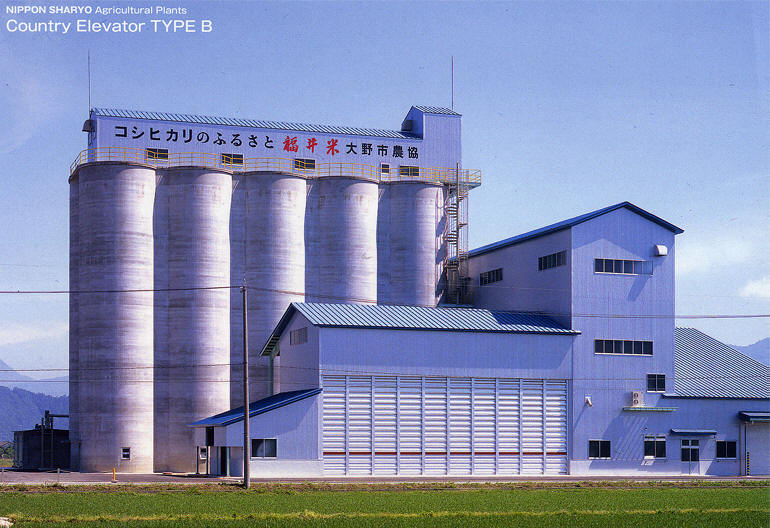浸種3日目でだいぶ濁りが増えてきました今日は未来の日本のお話し 今朝は有事の際の食料自給の話題をテレビで放送していました 食料自給率が低すぎで有事の際に輸入がストップすると 7200万人餓死する可能性があるとのこと 食料のほとんどが輸入に頼る中、米はダントツの自給率の日本 米さえあればなんでもできる!って未来を作りたいと思って この事業を始めました 明日6月1日で10年目になります 麹のスポーツドリンクから始まり、麹のビールを経て麹のモルトビールをスタートしています 米を主役にするには米の産業を新しく作る もしくは米の代替産業を作る でビールの原料を米にできれば最高にハッピー しかも麹でさらに美味しいビールを! 海外に向けたジャパニーズビールも輸出で好循環! というまぁ簡単にいうとこんなお話し さて現場レベルで何がハッピーかというと 農家さん側から見ると 「籾のまま納品できる」 です 通常は 稲刈り→脱穀→乾燥→籾摺り→精米(玄米)→精米(白米)→貯蔵→出荷 この工程を 稲刈り→脱穀→乾燥→出荷 にしてもらおうということです メリットとしては 人件費、光熱費、保管費がめっちゃ浮きますよ〜って話です また、一番大切ところは籾の状態で保存しておくことが一番美味しい!ってところです 玄米で保存して食べるときだけ精米される方もいると思いますが 籾がついているのでさらに酸化を防ぎます 生命の種の力の素晴らしさですね 籾を白米までするとおよそ3〜4割ぐらい重量が減ると言われています が、このあたりも米モルトの製造者としては、白米と同じ価格で買取します!と言えるとさらにハッピーかと思います ただこのあたりはビジネスでもあるのでお互いハッピーであれば、価格は変動しても良いかと 麹モルト産業の黎明期はおそらく各ブルワリーや麹屋さんでの手工業 その後産業化してカントリーエレベーターへ集積 最終的に巨大な工場に納品する大型トレーラーの列が続く風景が見られる ギネスがあるダブリンの街の風景が終着点でしょうか (下に動画貼らせてもらいます。ちょっと画質がガビガビやけど・・。前はアマプラにもありましたよ、世界のメガ工場シリーズ) ちなみに通称「カントリー」は日本の中でも通じる地域と通じない地域があります 佐賀、福岡なんかの米、麦どころは多いですが 山間地域などはあまりありません
Delivery with rice seed On the third day of soaking, the water has become quite murky. Now, let's talk about the future of Japan. This morning, there was a broadcast on TV about food self-sufficiency in times of crisis. It was mentioned that if the food self-sufficiency rate is too low and imports are stopped during a crisis, there is a possibility that 72 million people could starve to death in Japan. While most of our food heavily relies on imports, Japan has the highest self-sufficiency rate for rice. If we have rice, we can do anything! That's the future we want to create, so we started this business. Tomorrow, June 1st, marks the 10th year since we began. We started with a koji sports drink, then moved on to koji beer, and now we're starting with koji malt beer. To make rice the protagonist, we need to create a new rice industry or develop alternative industries using rice. If we can use rice as an ingredient for beer, that would be fantastic. Moreover, we can make even more delicious beer with koji! Exporting Japanese beer overseas creates a positive cycle! That's the gist of the story, to put it simply. Now, what brings happiness at the field level? From the perspective of farmers, it's being able to deliver the rice as it is, without husking. Normally, the process is as follows: Rice harvesting -> threshing -> drying -> husking -> brown rice milling -> white rice milling -> storage -> shipping. We want to simplify this process to: Rice harvesting -> threshing -> drying -> shipping. The benefits include significant savings in labor costs, utilities, and storage expenses. Most importantly, the best way to preserve rice is to keep it in its unhusked state. While some people may choose to mill the rice only when they eat it, having the husk prevents further oxidation. The power of the seed of life is truly amazing! It is said that the weight of rice decreases by approximately 30-40% when it is milled into white rice. However, as a rice malt manufacturer, we can say that we will purchase it at the same price as white rice! That would bring even more happiness, I believe. However, since this is also a business, if both parties are happy, it may be acceptable for prices to fluctuate. In the future early days of the koji malt industry, it will be probably mostly done as a craft in various breweries and koji shops. Then it became industrialized and consolidated into country elevators. Eventually, we see the landscape of large trailers delivering to huge factories, similar to the scenes in the city of Dublin where Guinness originated. Afterward, the effect is expected to spread to rice-growing regions throughout Asia. By the way, the term "country(it mean grain storage facility in Japanese)" has different meanings in different regions of Japan. There are many regions like Saga and Fukuoka that are known for rice and wheat production, but there are not many in mountainous areas and other places.
籾で納品って最高ですよねってお話し{Delivery with rice seed}

